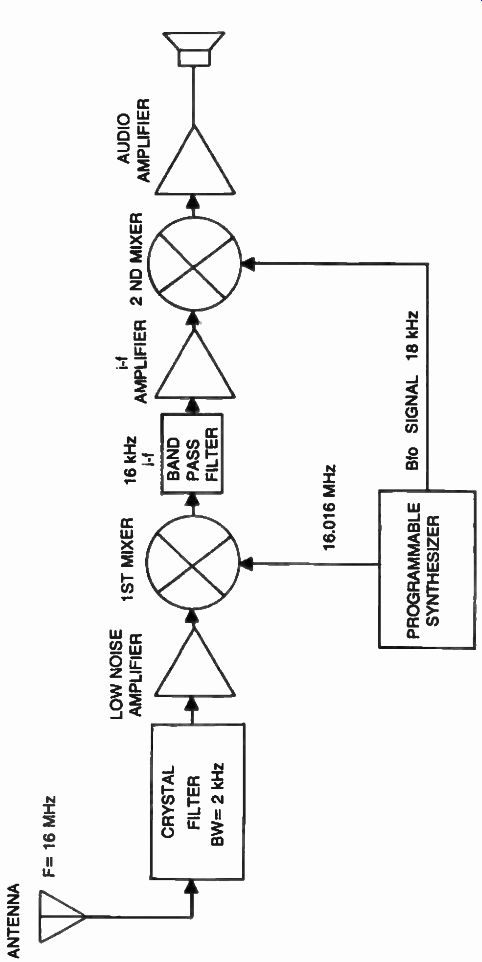Some companies manufacture a single-conversion down-conversion receiver with the i-f around 16 kHz, (Fig. 1). The antenna is directly fed into a multi-pole crystal-lattice filter with a bandwidth of 2 kHz, allowing final selectivity to be achieved at the input of the radio, before any mixing takes place. This filter is very lossy and is followed by a very low noise amplifier and mixer which translates it to a 16 kHz i-f where additional selectivity and amplification is obtained before detection takes place. The image is greatly reduced by the crystal filter and a minimum amount of products are created.
This is really a superbly performing radio from a signal handling point of view. The receiver is intended for maritime communication where fixed channels are usually allocated to users.
Physically, the receiver measures approximately 1 x 2 x 4 inches with the filter taking most space. About 12 separate receivers could be packaged in a box, and frequency change could be accomplished by turning the power on to the desired unit.
If we were to create a general-coverage receiver (0.5-30 MHz) based on this principle, we would be using about 14,750 crystal filters which would tend to cost several million dollars. Very impractical, but it has its application. If someone could make a tunable filter of this nature for the front end, this would probably be an ideal approach for a superheterodyne receiver.

Fig. 1. Block diagram of the special conversion receiver.